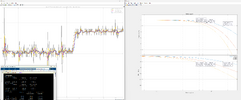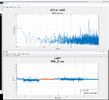DaveElectronics6XT
New Member
I was studying different types of filters, in particular I came across the ButterWorth Filter, The Tschebyscheff-Filter, the Bessel filter and the Linkwitz–Riley (L-R) filter. I found them on wikipedia. I am dealing with a control system in closed loop so the signal has to not be delayed to much, while analysing these filter I noticed they have a huge phase delay. Why it is not important in analoga and digital filters?




